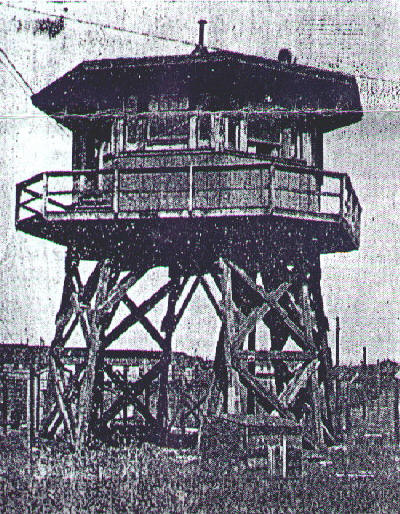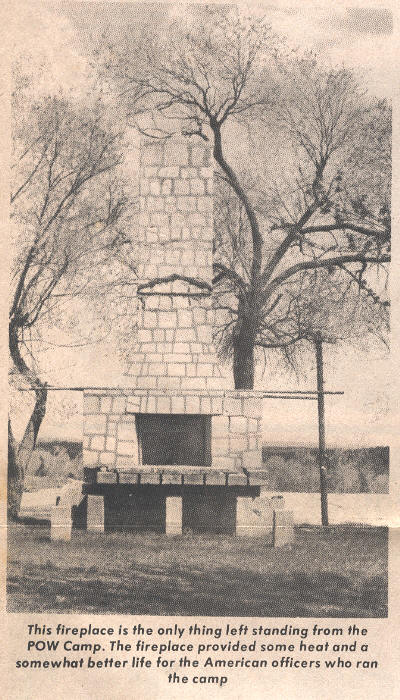REFLECTIONS ON WEINGARTEN POW CAMP
|
|
| A few lonely strands of barbed wire and the remnants of a chimney are all that
remain, but to the people who worked there, the Weingarten prisoner of war camp is a
living bit of America's last great war, proof of a vibrant, all-American era. Wilson Donze, a longtime Weingarten resident, went off to war in Europe just as the government began buying up land for the camp in the summer of 1942, acquiring 835 acres. "They never used all of it," Wilson said, "only about half." His father sold 24 acres of farmland to the government, an area that was later used as the officer's quarters. When complete, the camp housed some 3,500 Italian prisoners of war and 1,500 American soldiers. Barracks, a hospital and a movie theater were among the 380 buildings comprising the camp, as were five deep wells, a sewage system and an elevated water tank. Several civilians were employed at the camp. Jeanette Victor of Flat River still has Civilian Pass No. 50, which she was required to show every day as she entered and left the camp. One of the prisoners painted her portrait, which she has also kept. Mrs. Victor worked as a secretary in the Special Services office, which oversaw recreation and activities for the prisoners and the American soldiers. She and the others were proud of their jobs, proud of doing their bit for the "home front." "It wasn't just a job," Mrs. Victor said. "It was a part of the war effort. There was a real feeling of patriotism." Margaret Politte of Farmington agreed. "You realized there was a war going on because you were in the midst of all of this." "When we left, if we heard "Taps," we all had to climb out of the car and observe that," Mrs. Victor recalled. The prisoners were well-treated and no one recalls any escape attempts. "I think they became rather comfortable here. They weren't mistreated in any way that I knew of," Mrs. Victor said. The prisoners were not allowed to leave the camp, except for those on work details in the area, but they could move through the camp itself. Mrs. Politte worked as a secretary in the headquarters building and had contact with many of the prisoners. "We saw quite a few of them. You didn't see the ones they really kept locked away because they were dangerous, but others would help with some of the duties, and they were friendly." The prisoners took care of "any kind of maintenance work, that type of thing," she said. Many were sent on work details throughout the area, sandbagging during flooding or helping to build roadways and sidewalks. Merchants could hire the prisoners also for $2.40 per day. The prisoners were allowed to keep 80 cents of that as their daily wages. Although the community may have been apprehensive when the prisoners first arrived, they soon calmed down when they realized the prisoners were a peaceful lot. There was never any hint of danger," Mrs. Victor said, in fact "I really didn't think about it." The camp closed shortly after Aug. 14, 1945, when the war ended. No one remembers the exact date. After the prisoners were sent home -- some to return [to] the United States and become citizens, others to visit the camp site and reminisce -- the government came back to disassemble the buildings and sell the land back to the local farmers. "They shipped the water tank up to Iowa somewhere," Wilson Donze said. The rest, he added, was parceled out all around the country. But tearing down buildings and letting the fields overgrow the ruins
cannot destroy completely the camp's presence. Like the remnants of barbed wire that once
encircled the camp and the people who served there, the memories remain.
Published by THE DAILY JOURNAL, Flat River, St. Francois Co. MO, Fri. April 24, 1987 in a supplement "Reflections: View of the Past - A Look to the Future." By Peggy O'Farrell, Daily Journal News Editor |

